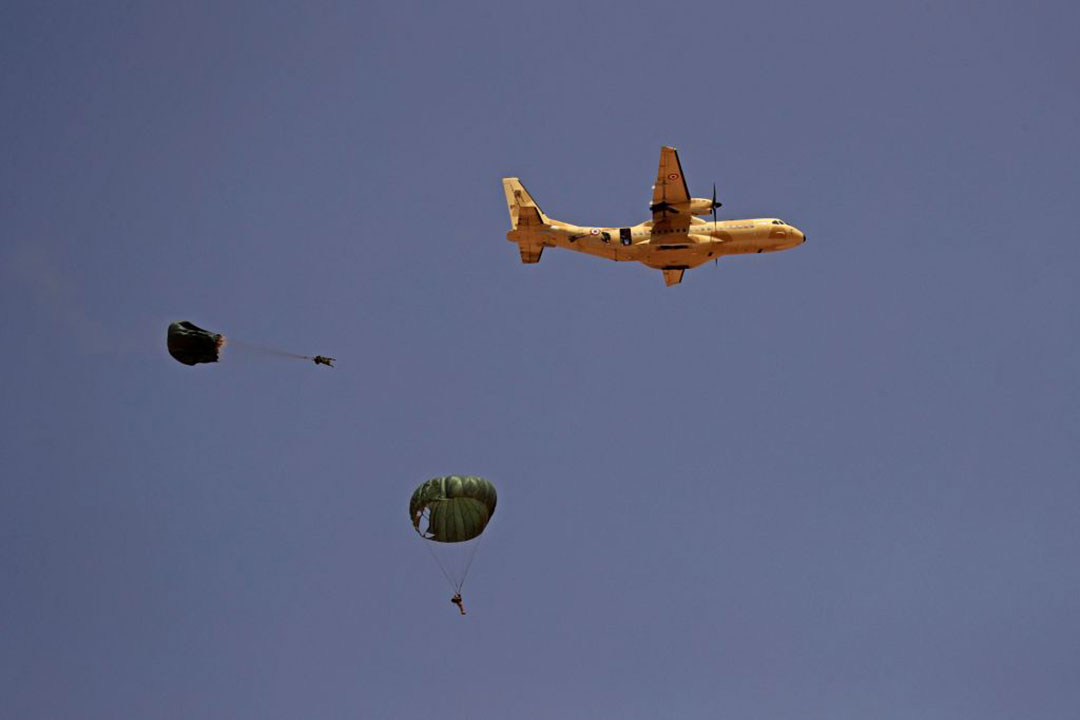Study: Greater Cooperation, Regional Centers Could Improve Airlift
ADF STAFF
When it comes to moving people and materiel around Africa, the enormous scale of the continent and its limited number of major roads and railroads means militaries often must take to the air.
But African nations vary greatly in their airlift capacity, the age and origin of their equipment, and their policies for using those aircraft, according to a new Rand Corp. report, “Strategic Airlift in Africa.” The lack of forward operating bases or a hub-and-spoke system makes this challenge even greater.
“That’s the crux of the problem,” Ben Caves, a Rand researcher told ADF. “This is only going to get worse. There’s a chronic shortage of airlift. Airlift is the default option because planning often isn’t perfect, information sharing isn’t perfect.”
In effect, every airlift operation is a single point-to-point mission. A hub-and-spoke system would allow airlift into a single destination with short-haul flights, trucks or rail lines distributing regionally from that point. Such a system would allow nations without airlift capabilities to work with those who do to pool resources across a region, Caves said.
Properly employed, airlift can be an important force multiplier during emergencies. Sub-Saharan Africa, however, “represents a glaring void where the capability is still not adequately reliable,” U.S. Air Force Maj. Ryan McCaughan wrote in his analysis of airlift challenges in Africa. It was published in 2019 in the U.S. Air Force’s Journal of European, Middle Eastern, and African Affairs.
“While at strategic, coastal locations, such as Djibouti and Senegal, there is suitable infrastructure, [it is] strikingly insufficient across the approximately 45 nations that comprise sub-Saharan Africa,” McCaughan wrote.
Caves sees a solution: pooling and sharing resources across regional lines. Bringing together nations with similar concerns and objectives would help build greater cooperation on airlift, among other issues, he said.
Longer term, that could extend to the purchases of aircraft as well. Greater coordination of purchasing would mean more commonly used equipment, better cross-training on different equipment and better cooperation on regional missions. All of that would make operations more efficient, Caves said.
Across the continent, for example, nations operate more than 100 U.S.-made C-130 cargo planes, aircraft capable of providing the kind of lift needed for peacekeeping operations, anti-piracy operations in the Gulf of Guinea, or shuttling COVID-19 vaccines over long distances. About half of those are in Sub-Saharan countries.
The planes are not evenly distributed, ranging from 26 in Egypt to one in Gabon. Nor are they all functional at the same time due to differing maintenance schedules.
To coordinate airlift operations, the African Union (AU) established the Continental Movement Coordination Center. The center oversees airlift contributed by the continent’s regional economic communities, as well as short-term contract airlift, commercial sealift and land movement for peacekeeping operations.
The AU has also compiled a database of continental air assets available through member nations to see where gaps and opportunities exist.
“It’s all about being cleverer with what you’ve got,” Caves said.
Expanding repair facilities on the continent would help nations pool their airlift resources and ensure proper maintenance, according to McCaughan.
As of 2019, C-130 maker Lockheed Martin Corp. had a single facility capable of maintaining C-130s — a facility in Denel, South Africa, specializing in the C-130H version of the aircraft.
“While the aircraft have been present, the money to pay for maintenance has not been,” McCaughan wrote in his analysis.
Improving Africa’s airlift capabilities will require greater investment on the part of governments and the private sector, Caves said.
The AU has the potential to drive such investment by designating maintenance hubs across the continent in strategically significant areas and helping member states acquire more aircraft, McCaughan wrote.
“The potential customers for the new depot facility would be newly received aircraft and those which have previously not undergone depot maintenance at all, thereby enabling existing depot facilities to sustain their current business tempo,” McCaughan wrote.
Finally, it is worth looking at other transportation options. Often, countries rely on airlift — both within Africa and from outside — as a substitute for the kind of long-term planning and multinational cooperation that would allow them to use cheaper, but slower, transport options such as sea, rail and even commercial shippers, according to Caves.
“They should also be making greater use of freight carriers for low urgency, low-risk freight,” Caves said. “Airlift is often the default because of a lack of planning or of timely sharing of information on national missions.”


Comments are closed.